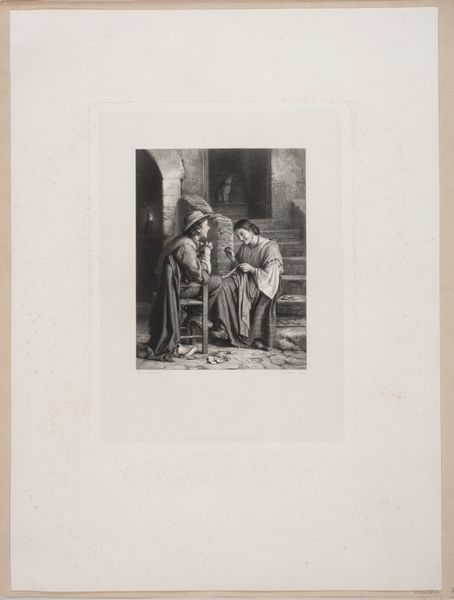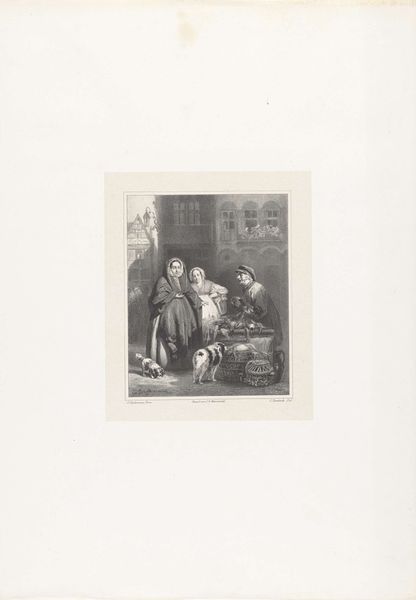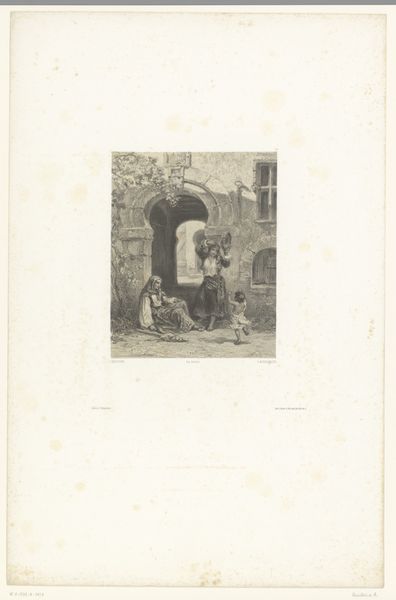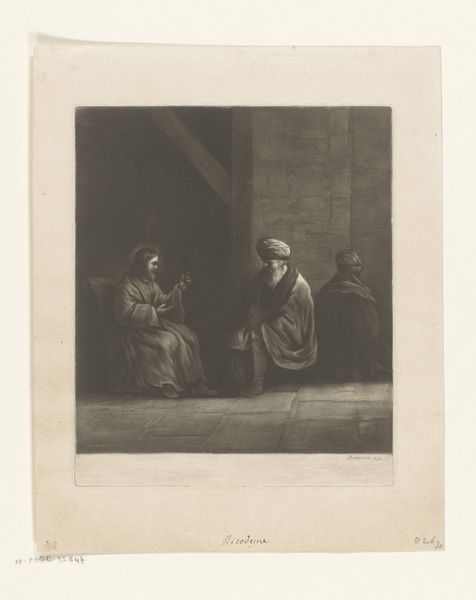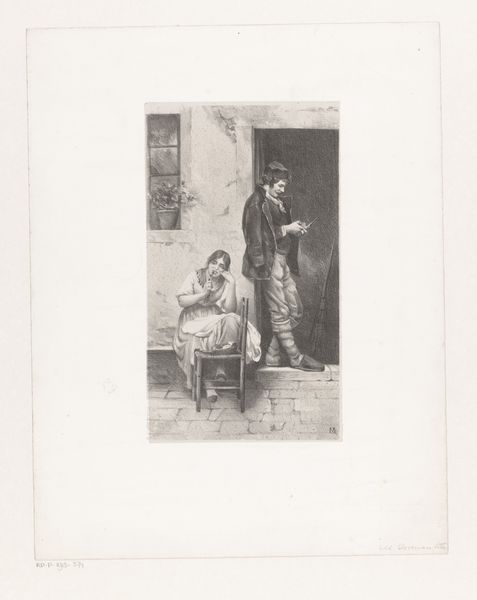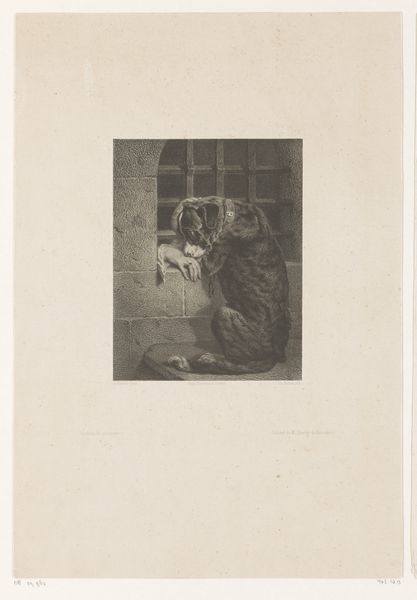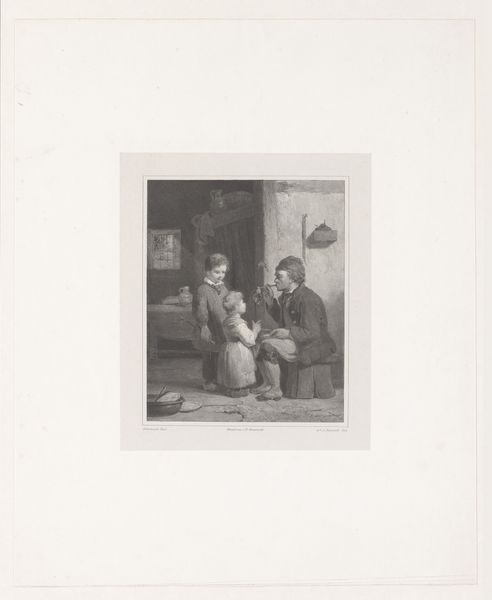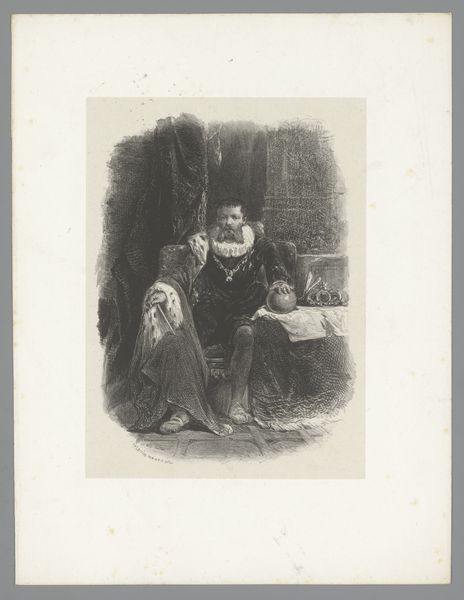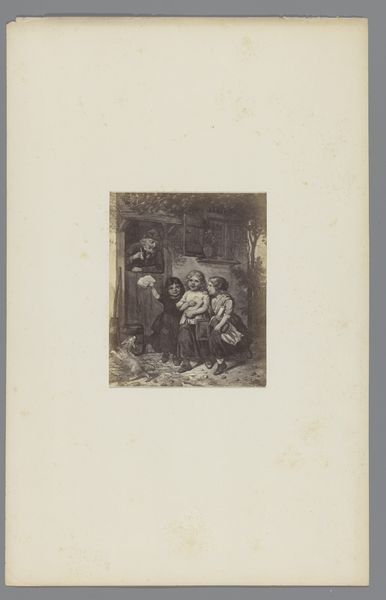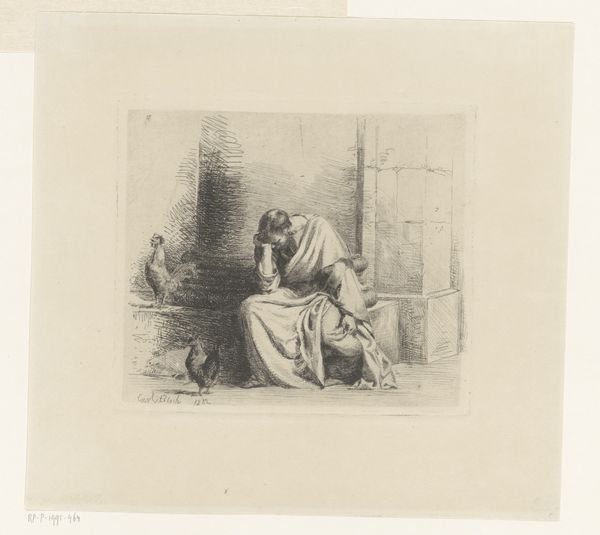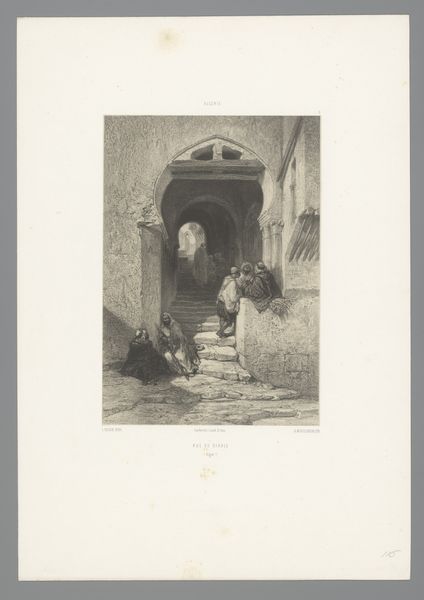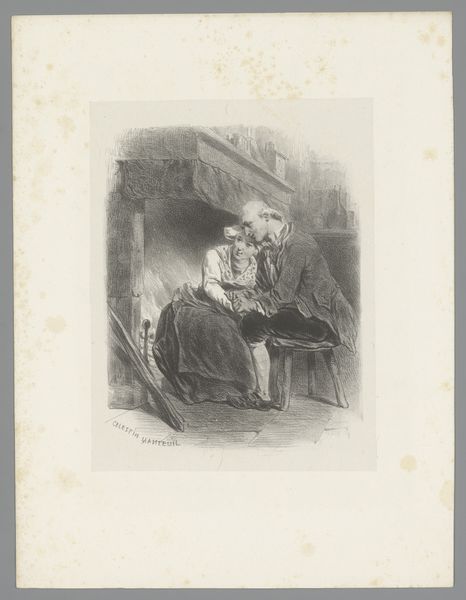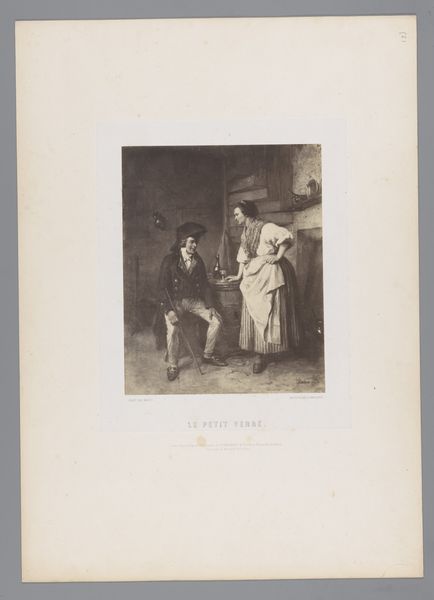
Man met tulband en vrouw met kind aan de borst op een bank 1830 - 1881
0:00
0:00
drawing, print, engraving
#
portrait
#
drawing
#
mother
#
narrative-art
# print
#
orientalism
#
islamic-art
#
genre-painting
#
engraving
Dimensions: height 446 mm, width 315 mm
Copyright: Rijks Museum: Open Domain
Editor: We're looking at "Man met tulband en vrouw met kind aan de borst op een bank," a print, engraving, or drawing by Adolphe Mouilleron made sometime between 1830 and 1881. It depicts a man and a woman with an infant. They are all seated on a bench and set against a stone wall. The figures almost look tired, even burdened. How would you interpret a work like this? Curator: This image, like many from the 19th century, reflects the West's fascination with, and often skewed perspective of, the "Orient". Mouilleron’s piece participates in the visual language of Orientalism, portraying an imagined Middle Eastern scene. Note the "exotic" details – the turban, the traditional dress, the architectural elements in the background. Ask yourself, what function do these details serve? Editor: It feels like the artist is focusing on capturing what he perceives as another culture. Is he romanticizing it? Curator: That's a key question. While the image may seem straightforward, it's important to consider the power dynamics at play. Who is represented, and how? Whose gaze is prioritized? Images like this helped shape Western perceptions of the Middle East, sometimes reinforcing stereotypes or contributing to a sense of cultural superiority. The presence of mother and child speaks to the “universality” of human experiences. Editor: So it’s more than just a simple scene; it’s participating in a larger political conversation through its visual representation? Curator: Exactly. It is a work that reflects colonial power, packaged within a seemingly simple genre scene, presented and consumed by a European audience. What seemed romantic becomes part of the construction of otherness. Editor: I never would have considered this. Now I’m left questioning the very act of viewing. Thanks so much! Curator: My pleasure. The real learning comes in questioning what seems “normal” in artistic and cultural portrayals.
Comments
No comments
Be the first to comment and join the conversation on the ultimate creative platform.
